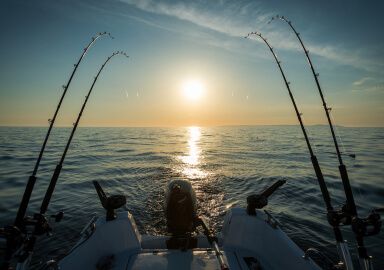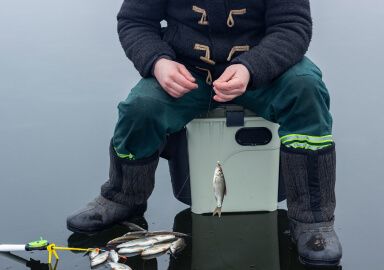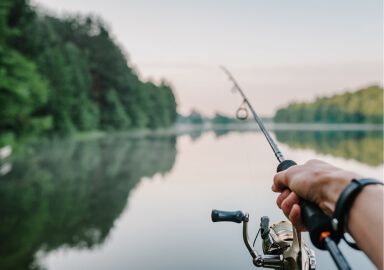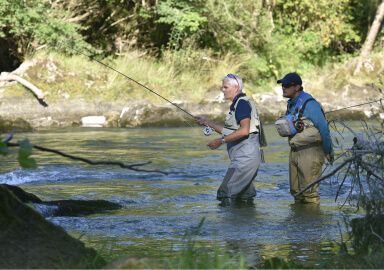Muskellunge (Musky)
Muskellunge are large, to very large, top fish predators of the bigger waterbodies of central and northern North America.
View 10 listings
10
listings
–
price starting from
2
countries
–
to the nearest trip
Where and When?
Muskellunge are found naturally in the USA from northern Michigan, eastwards though the Great Lakes, to New York. They are also found down the Tennessee Valley, in central USA, and northwards into Canada around Hudson Bay. They have been introduced to many other suitable areas and are also stocked in some waters where they do not breed well. Muskellunge prefers the slower moving waters of large rivers and favour many parts of the larger lakes. There is seasonal movement, into the shallower waters in warm times of the season and day, and they often retreat into deeper waters in winter and during cold periods.
As ambush predators, muskies spend much time “lying” in wait for prey, but they also patrol extensively and sometimes continuously through their “territories” in search of suitable food. In winter they prefer deeper waters and do not feed much and, in warmer periods, they seem to feed best early in the morning and towards evening. Although they are less active in winter they can be caught at any other time of the year, but they have local patterns of activity and habits that are often known by local anglers. They are usually found near structures such as weed beds, tree stumps and rocky outcrops.
About Muskellunge (Musky)
Muskellunge (Esox masquinongy) are torpedo shaped with the elongate bodies and flat heads typical of ambush predators. They are light brown, green, or silver on their sides with dark stripes or dots down the flanks. The mouths are very large and armed with rows of sharp, backward facing teeth. The dorsal, pelvic and anal fins are towards the rear of the body in order to propel the fish quickly forward to engulf prey that is then manoeuvred and swallowed head-first. They can grow to as much as 180 cm. (72 in.) and 32 kg. (70 lbs.), but are more common between 71 and 122 cm. (28-48 in.) and 6.8 and 16.3 kg. (15-36 lbs.).
The muskellunge eat mostly fish, and may feed on many species, including their own, up to one third of their own length in size. Muskies have also been recorded eating frogs, ducks and even small rats. They are inhabitants of large rivers, lakes and dams and often form loose aggregations of similar sized individuals. They spawn in mid/late spring in shallow water, usually over vegetation, but recruitment rates are not great and growth is slow compared to some other species.
How to Catch?
Muskellunge are well known for being extremely pernickety about taking a bait, which is the reason they are often called “a 10 000 cast fish”. “Muskies” can be caught from the banks of rivers and lakes or from boats, depending on circumstances and the preferences of the anglers. Many use spinning and exclusively artificial baits, while others strongly favour live bait. Both have merit and both can catch well or fail miserably. Artificial bait anglers use an extremely wide range of shapes, sizes and colours retrieved in different ways. Local knowledge can assist greatly, but many agree that, at the end of most casts, it is best to do a “figure 8”. Muskies often follow a bait to the boat/bank but do not bite. Describing a large “8” with your rod tip next to the boat/bank will often entice a muskie to finally engulf the bait.
Live baiting can be very successful, particularly using locally caught species, if several hooks are set in such a way that allows the baitfish to continue moving. The bait fish can be held in the water column by using a float, or kept in place in a river by using a sliding weight. Either way, it is best to let the bait be swallowed and then, as the fish moves away, tighten the drag fairly rapidly. Muskellunge are not an easy fish to outwit and catch and they can grow very large. This has created some fanatical muskellunge anglers and it is not a simple feat to locate, hook, play and land a good sized “muskie”.







